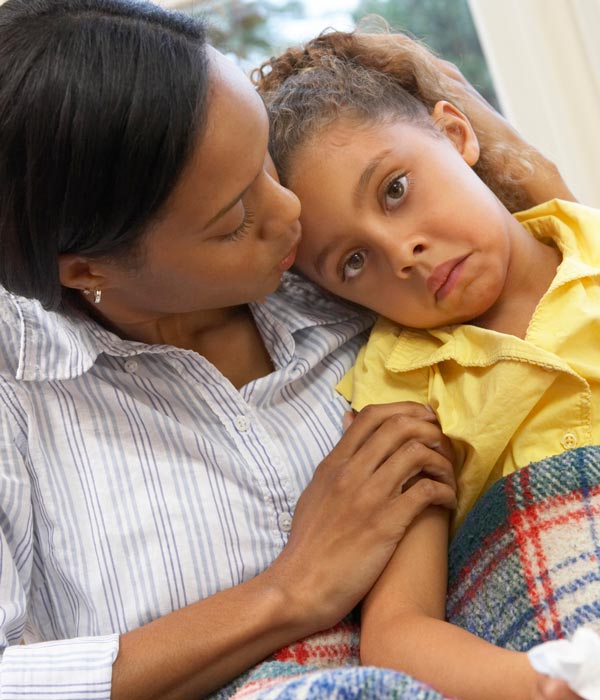
Parents’ minds can sometimes jump to the worst conclusions when their children complain of an ache or pain, thinking it could be an injury or a chronic condition. Sometimes, though, those aches and pains are simply growing pains.
The source of growing pains is unknown. According to the American Academy of Pediatrics (AAP), growing pains are not actually caused by growth. Even during a growth spurt, the rate of growth is too slow to cause any pain. “Growing pains” may very well be muscle soreness from an activity-packed day.
Still, it’s important to be able to distinguish growing pains from other conditions and injuries. These are some of the signs to look out for.
It’s probably growing pains if…
- the pain is in a muscle, rather than a joint (the front of the thighs, the calves, and the backs of the knees are all common spots)
- your child had an activity-packed day
- there are no other symptoms present aside from the pain–this includes fever, swelling, redness, a lump in the muscle
- your child allows you to touch the painful area (children who have growing pains tend to feel better when you rub the area that is hurting)
- the pain does not persist for long periods of time
Essentially, if nothing else about your child seems out-of-the-ordinary, there probably isn’t any cause for alarm. Just be sure to monitor your child to make sure that no other symptoms are present. Until the pain subsides, massaging or stretching the area can help. A warm bath or a heating pad can help to soothe the muscle aches. You can also give your child ibuprofen or acetaminophen for the pain, but do not give your child aspirin–it has been linked to a rare but serious condition called Reye syndrome.
If you think the pain could be caused by overactivity, try to encourage your child to participate in lots of different activities; this could also help prevent overuse injuries in the future.
There are, however, some signs that could indicate that the pain is more than just growing pains.
Seek Medical Attention If…
- the pain is long-lasting or severe
- the pain is present in the joint, rather than a muscle (this could indicate a condition like juvenile arthritis)
- there is a rash, a lump, redness, and/or swelling in the injured area
- the pain happens after a bump or other injury
- your child recoils if you try to touch the injured area (if it is an injury or joint condition, moving the area may make the pain worse)
- your child has a fever
- your child has any other unusual symptoms, such as tiredness, weakness, or loss of appetite
In most cases, if a child has a more serious condition, other symptoms will be present aside from the pain. The symptoms listed above are red flags and often indicate a more serious condition. If any of the above symptoms are present in your child, it is important to seek medical attention to rule out an injury, inflammatory condition, or any other medical problem that could be causing the pain.
Now that you know what to look out for, your mind will hopefully be at ease the next time your child complains of muscle pain. Unless you see a red flag, he or she will probably be just fine.